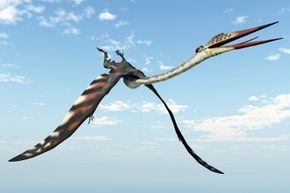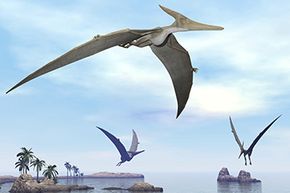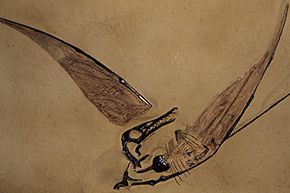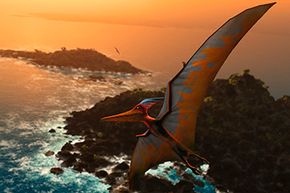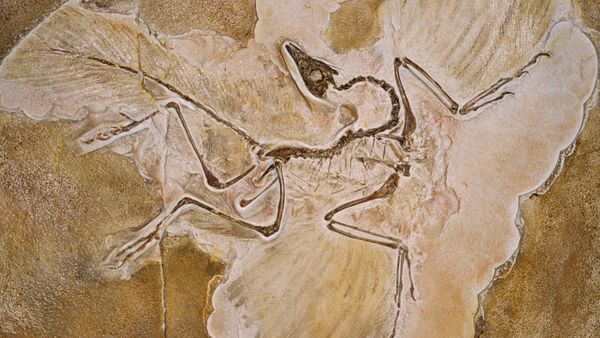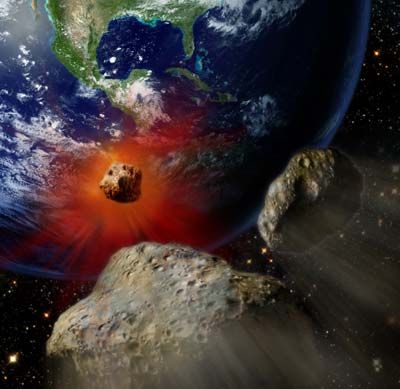Key Takeaways
- Pterosaurs were the first vertebrates to achieve powered flight, existing from the late Triassic to the end of the Cretaceous period.
- They had diverse forms, from small bird-sized species to giants like Quetzalcoatlus, which had a wingspan of up to 36 feet (11 meters).
- Pterosaurs were not dinosaurs but closely related, and their fossils provide insight into their unique flight adaptations and behaviors.
Imagine hopping into a time machine. You find the time and location knobs preset to "70 million years ago" and "West Texas." Why not, you think. With some hesitation you push the bright red start button and BAM! You're transported to an ancient floodplain dotted with cypress, laurel, mangroves and various cone-bearing trees. Amazingly, it seems to have worked [source: NPS].
Panicked, you check your phone, but to no avail — you're in the late Cretaceous period. As the sobering realization sets in that help is out of reach, you get an uneasy feeling that something's behind you. As you swing around, a massive winged beast the size of a small airplane, 36 feet (11 meters) across, slices through the air just above you at speeds approaching 67 miles per hour (108 kilometers per hour) [source: Castro].
Advertisement
Terrified, you dive to the ground as it lands nearby. A cautious glance reveals a giant reptile with wings unlike any bird or bat you've ever seen. Walking on all fours, the creature picks through the vegetation with a long, toothless beak, and eventually snatches a small animal hiding in the brush. As tall as a giraffe, this monster is Quetzalcoatlus northropi, one of the largest pterosaurs ever to grace the prehistoric skies [source: Witton and Naish].
Named from Greek words meaning "winged lizards," pterosaurs were a group of flying reptiles that first appeared on Earth about 215 million years ago. They were the first vertebrates, or backboned animals, to take to the sky, beating birds and bats by millions of years. Though they're not technically dinosaurs, they lived during roughly the same period and also went extinct when a comet impact threw the planet into chaos some 65 million years ago. By the end of their run, pterosaurs had spread across the globe, inhabiting what's now North and South America, Europe, Asia, Africa and Australia [source: Unwin].
Unfortunately, we don't have time machines to take us back to the time of the pterosaurs, but we do have paleontologists, scientists who study and interpret fossils. They've been able to use old rocks and bones to discover some pretty amazing things about how these creatures evolved, what they looked like and how they flew. Once you get to know pterosaurs, you'll see why some have called them "dragons of the sky."
Advertisement
